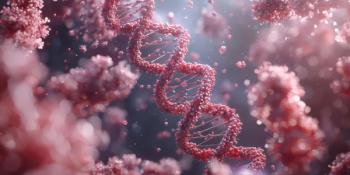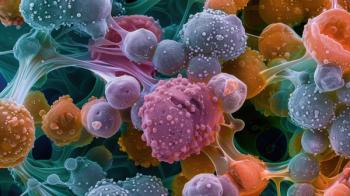
Novel Combination Therapy May Effectively Treat High-Risk Neuroblastoma
A novel epigenetic drug can be combined with an existing therapy, venetoclax, to more effectively kill high-risk neuroblastoma cells.
A newly-discovered combination therapy involving a novel epigenetic drug and B-cell lymphoma 2 (BCL-2) inhibitor may potentially reverse the development of high-risk neuroblastoma, according to a recent study.
Neuroblastoma is one of the most common pediatric solid tumors, accounting for 700 new cases per year in the United States. High-risk neuroblastoma, the most dangerous form, is often characterized by amplification of MYCN and loss of differentiation potential; however, no drugs are currently approved to treat MYCN-amplified disease.
In the study, which was published in Science Translational Medicine, the researchers found that the epigenetic drug, known as a small-molecule dual inhibitor of lysine 27 of histone 3 H3K27me demethylases, can be combined with an existing drug called venetoclax to more effectively kill high-risk neuroblastoma cells.
The findings demonstrated that H3K27me demethylase inhibition increases H3K27me to initiate cell differentiation, reversing neuroblastoma cells’ inability to differentiate, which is a primary characteristic of the disease, according to the study.
“We believe this is a really interesting finding because it demonstrates that differentiation problems involve errant histone demethylation,” study author Anthony Faber, PhD, said in a press release. “Moreover, the fact that this demethylation error can be targeted and readily reversed long after the cancer grows was somewhat surprising to us, and we think it is a critical insight into how we can potentially treat high-risk neuroblastoma.”
H3K27me demethylase inhibitors were also found to instigate cellular stress, which forced the neuroblastoma cells to become more malleable and therefore more vulnerable to the BCL-2 inhibitor, the researchers noted.
Previous studies have already shown venetoclax to be effective in treating neuroblastoma, specifically high-risk tumors characterized by overexpression of MYCN. The latest findings indicate that combining venetoclax with the new drug may be even more effective.
“H3K27 demethylation inhibition is a promising therapeutic target to treat high-risk neuroblastoma, and H3K27 demethylation can be part of rational combination therapies to induce anti-neuroblastoma activity,” Dr Faber said in the press release.
Reference
Lochman TL, Powell KM, Ham J, et al. Targeted inhibition of histone H3K27 demethylation is effective in high-risk neuroblastoma. Science Translational Medicine. 2018. Doi 10.1126/scitranslmed.aao4680.
Newsletter
Stay informed on drug updates, treatment guidelines, and pharmacy practice trends—subscribe to Pharmacy Times for weekly clinical insights.


















































































































































































































